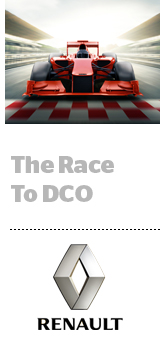
The French automaker Renault goes big for its marketing push around the Formula 1 motor speed races.
But Formula 1 fans and Renault customers live all over the world, so the brand needed to reach audiences with different languages and cultures in a way that resonated.
The challenge wasn’t just a global one, but a regional one. In Latin America, for example, most countries speak Spanish as the primary language, but each has its own slang and dialect. And in Brazil, the region’s largest country, the dominant language is Portuguese.
“Formula 1 is a key pillar of our communications strategy,” said Marcelo De Carlo, regional advertising and digital marketing manager for Renault in Latin America. “But it was hard for us to deliver content with local adaptations. To be really representative, we needed to adopt more specific marketing.”
Havas Argentina, Renault’s media agency in Latin America, introduced the brand to dynamic creative in 2017 to efficiently adapt creative to different audiences. Renault worked with dynamic creative management platform Herolens to develop creative for different localities across the region for the 2018 Formula 1 season’s 21 races.
For the campaign, Havas defined four audience targets that expressed an interest in motor sports: women, tech enthusiasts, gamers and extreme sports athletes. It then passed those profiles to Renault’s creative agency, Publicis Buenos Aires, which came up with the big idea and used Herolens to create more than 1,000 video assets tailored for each target.
“We had to communicate something specific to each race and location,” said Andres Mociulsky, head of programmatic at Havas Argentina. “Instead of hundreds of manual campaigns, DCO [allowed us to] produce the amount of creative we needed and be very efficient in real time.”
Rather than putting dynamic overlays on top of a static videos, Herolens spliced and recombined scenes of the videos to best speak to the target audience and keep production costs low. The brand then retargeted users with DCO-generated banner ads that connected back to the campaign using real-time information like race results.
The approach drove a view-through rate that was 62% higher than Renault’s benchmark, with 70% of viewers watching the entire video. Click conversions increased 40% over the benchmark with cost-per-click down 30%.
“If you try to develop 8,000 videos, it’s impossible on a budget,” De Carlo said. “For campaigns that are more conversion-oriented, DCO gives you the most power.”
Renault will take a DCO-based approach again for its 2019 Formula 1 season campaign, for which it plans to create roughly 8,000 videos. Renault has also extended its use of DCO to retail campaigns and uses the technology for about 80% of its communications, De Carlo said.
This year, the automaker’s creative agency will be more involved with DCO production as the tools become more sophisticated. While it was initially difficult for Publicis’ Renault team to use data to make creative decisions, incorporating data into creative strategy is necessary for the future, said Iván Pinzón, regional director for Renault in Latin America.
“Sometimes it’s like, ‘I’m not really comfortable with this, but it’s what the data says, so I’ll try,’” he said.
As Renault continues to wade deeper into dynamic creative as a campaign tactic, it will need its creative and media agencies to work even more closely together – something that can be rare and difficult in the region between two competing holding companies.
“What the VP of marketing at Renault is requesting right now is integration,” Mociulsky said. “The agencies need to work together, and they need to work together with the client.”
This post was syndicated from Ad Exchanger.


More Stories
The Fin Tech Ad Tech Boom; Temu Tops Meta’s Charts (But At What Cost?)
Brother: NZ Marketing Awards celebrate industry success
AI Search Startup Perplexity’s Series B Funding Raises Nearly $63M, Launches Enterprise Pro